As an Amazon Associate I earn from qualifying purchases.
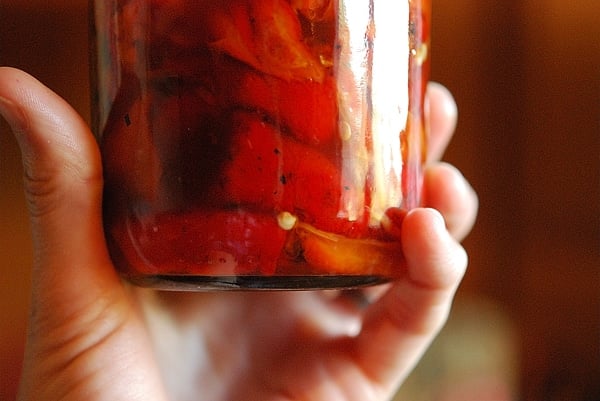
Consider, for a moment, the sweet pepper. No other plant demands so much, gives so little, yet keeps us coming back for more.
Sweet peppers are the coquettes of my garden. I coddle them, dote on their every need, and in return they toss me a few fruits to play with — so few, in fact, that I can barely bring myself to eat them fresh. I preserve almost every one the little minxes give me to eat huddled, alone, in the dead of winter. Or something like that.
Every year I say, “I need to plant more sweet peppers.” Every year I plant a few more. It’s never enough. I could lay waste to everything else in my garden and plant only an array of red bells, piquillos, padrons, pimientos and sweet cherry bombs — and still it would not be enough. It is not possible to have too many sweet peppers. Chiles? Yes, but not sweet peppers.
What’s more, after these princesses deign to drop me a pepper or three, it has become so late in the season that they die soon afterward, our relationship barely consummated. It reminds me of some character in an Edith Wharton novel (And yes, I’ve read several. Blame my mother for that one…)
Disconsolate, I used to count the days until February, when I could start a new set of seeds under hot lights inside; even in birth, sweet peppers need to be the center of attention.

But then, one day, I found a way to cheat death.Yes, it is as simple as a heavy pot, a warm climate, and a quirk of biology.
I live in Northern California, and in my little spot of land, we get a hard frost only once every few years. Light frosts, which are enough to kill a pepper, come no more than a couple dozen times a year in my garden. But in the front of my house, which faces south, those light frosts come less than a dozen times a year, and even in the dead of winter the highs soar past 50°F — warm enough to keep a pepper alive.
But aren’t peppers annuals? No. And that is a dirty secret perpetrated by seed dealers everywhere. The coquettes aren’t eager to die after all, it seems. Only cold kills them. What they want is an even deeper commitment from you the gardener before they willingly give up their fruit. I once had a Thai chile — a Capiscum frutescens, for you pepper freaks out there — that lived five years. Peppers, like most of us, want a long-term relationship.
So I dig up a few of my peppers from the garden every October, pot them up and move them to the front yard, which is such a blast furnace in summer — routinely reaching 110°F — that it would burn most peppers; that’s why I don’t keep them in the front all year long. It works for me. And it would work for anyone who has a sunny window.
Here is a useful video of the process.
My Thai chile lasted in Minnesota until one day even the inner windowsill dropped below 30°F. (Outside it was -19°F, -30°F with the wind.) So it can be done. Once spring returns, you will find your peppers strong and ready to flower early and grow large. And mature peppers bear more fruit.
What to do with that fruit? Well, I’d venture to guess that everyone reading this has a favorite pepper recipe. I have lots on this site. But I also preserve a lot of peppers, less out of fear now than because preserved peppers take on a character totally unlike fresh ones.
My main method to preserve peppers is to roast them over an open fire, then preserve them with a little salt, vinegar and oil. Peppers lack natural acid, so need to be pressure-canned if you aren’t using vinegar or salt.
This way of preserving does a number of things. Roasting kills any enzymes in the peppers that might deteriorate them over time, as well as softening and sweetening the peppers — not to mention getting rid of the indigestible skins. I then dredge the peppers in vinegar to up the acid level and give the peppers more tang. After that I salt them liberally to make things even more stable; salt also adds to the flavor. And finally I cover everything in olive oil to keep air out.
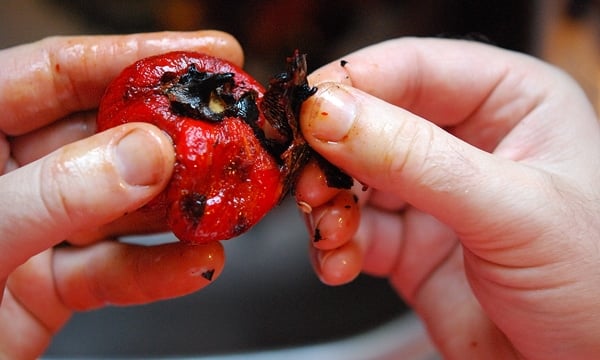
Some tips:
- Grill your peppers hard, as in blackened. Every sort of pepper has a skin of a different thickness. Try to do this with thick skinned peppers if you can; a thin skin can be a bear to peel off unless it is good and charred. Some thick skinned peppers are bells, Hatch-style chiles, pimientos, and paprika chiles. Poblanos are pretty easy to roast, and jalapenos are OK, but their skins are pretty thin.
- Steam the roasted peppers for a long time, in a paper bag. Take your time with this step. Walk away and do something else for a while. You’ll thank me. Nothing quite so fun as to be scalded with nuclear-hot pepper juice when you’re trying to peel them.
- Don’t wash the peppers. You want all that pepper juice you can collect, and running the peppers under water will rob you of that. This is the secret to really, really good roasted peppers.
Those of you in colder climates may be forced to choose which pepper’s charms most attract you, as you may not have space to save every one. And don’t be worried about the pepper dropping leaves in winter; it happens. Just keep it in a sunny spot, protect it from whiteflies, and keep it as warm as you can. It will repay you for your kindnesses next year.
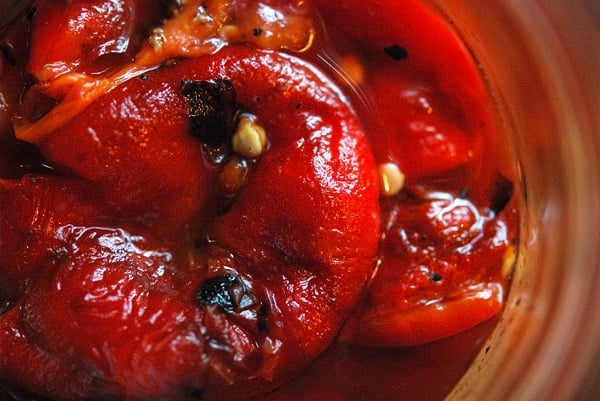
Preserved Peppers
Ingredients
- 8 red bell peppers
- 2 tablespoons olive oil
- 1 cup vinegar (any kind)
- Kosher salt
- Canning jars
- A chopstick or butter knife
Instructions
- Roast your peppers. Ideally this is over a smoky wood fire, on a grill. Second choice is a gas grill, third an open burner on a stove. Alternatively, arrange your peppers on a broiling pan and broil them. No matter what your heating method, you will need to turn your peppers from time to time as the skins char and blacken. When the peppers are mostly blackened, remove them to a paper grocery bag and roll up the bag to seal in the steam. You want to steam the peppers in their own juices. Let the bag sit for 20 to 40 minutes.
- After the peppers have cooled enough to handle, take them out one at a time and remove the skins, stems and seeds. Do not run the peppers under water, as this robs them of flavor. Once each pepper is cleaned — get as many seeds out as you can — drop it in a bowl. Do all the peppers before proceeding.
- Once all the peppers are cleaned and in the bowl, get a shallow bowl or small casserole pan and pour in some vinegar. I use red wine, cider or sherry vinegar for red peppers (sherry when I want them to be Spanish, cider for Portuguese, red wine for Italian or Greek) and white wine for green peppers. Dredge each pepper through the vinegar a few times to get it good and coated. Place it in another bowl. Do this for all the peppers.
- Sprinkle the bowl of peppers with kosher salt. Gently mix the peppers together like a salad. Sprinkle a little more salt and repeat. Sprinkle a little salt into the bowl with the pepper juice — the original bowl.
- Gather canning jars and pour a little vinegar into each one; enough to cover the bottom of the jar. Pack in the peppers, leaving 1 to 2 inches of space at the top. Use a butter knife or chopstick to run down the sides of the jars, releasing air bubbles. You will notice the level of liquid drop. Fill it with the salted pepper juice — but still leave room at the top of the jar.
- Once the air is out to the best of your ability and the vinegar-pepper juice it right at the top of the level of the peppers, pour in olive oil on top of everything to a depth of 1/4 inch. Screw the lids on the jars and you’re done. No sealing needed. These peppers will last a year in the refrigerator, although they will soften over time.
Notes
Nutrition
Nutrition information is automatically calculated, so should only be used as an approximation.
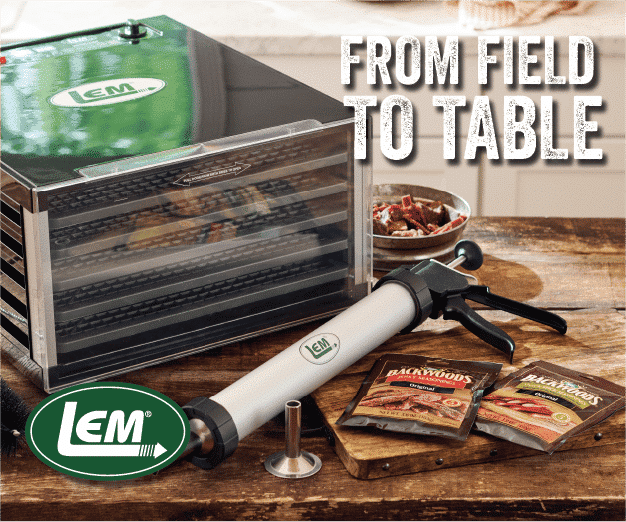

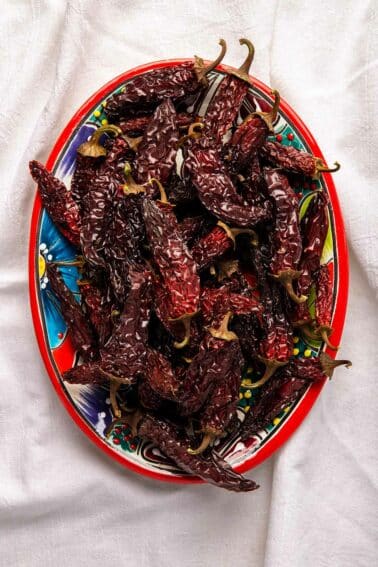
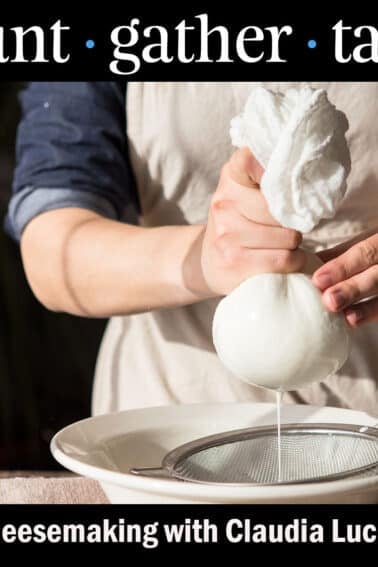


I just finished a jar of these peppers after they were in the fridge for a year. They were terrific and added some great tang and spice to a gnocchi dish. I’m doing it again with jalapeños today
I’ve used this recipe the past two years at the end of pepper season to preserve what I’ve got left! I like to get my charcoal grill ripping hot and rotate the peppers directly above to get a quick char without overcooking the peppers!
I tried this recipe tonight exactly as written with all bell peppers. I found it way too vinegary tasting for our taste. Is there anything I can do to cut down on the vinegar taste and still be able to preserve them properly?
Debbie: Not with this recipe. This is a method from Italy that works well, and safely. The only other way to preserve bell peppers is to freeze them, and I don’t like that method.
Does this …” pour in olive oil on top of everything to a depth of 1/4 inch” mean I fill the jar with olive oil leaving a 1/4 of an inch at the top? Or do I only put in a about 1/4″ of olive oil in each jar?
Ellen: It means you pour enough olive oil in the jar so that there is a 1/4 inch layer on top.
Can you do the same recipe with eggplant?
Dixie: I don’t know, sorry.
Hey Hank, thanks for sharing this.
I’m just confused about something, is this the kind of preserve where one could open the jar periodically to take out portions? Will it last about a year like that? Or is this one of those where once you open it, it degrades?
Thanks!
Phil: Yes, exactly. It will last a year in the fridge like that, if you keep the peppers topped off with olive oil.
I live in sub-tropical Queensland, but originate from Melbourne. So the first crop of capsicums I grew in a few large pots taught me that they are definitely perennial in this climate. Not only that but they grow like weeds when the left overs of fruit are thrown back into the pots – I grow them around other plants like lime and aloe vera and the sustenance watering for those is enough to get them to germinate and establish successfully.
So does this mean these can’t be stored in the pantry? I have bought chargrilled red capsicums in brine than have a self life and wondered about the recipe for these?
Lorraine: That is correct. The ones you buy at the store are pressure canned. I am not sure what the protocols are for that.
Hi Lorraine, anything that is pressure canned will have a shelf life up to two years. It does not have to be kept in the refrigerator. However once you open up the jar, than it will need to be placed in the fridge for storage.
How would you can roasted peppers like this if you didn’t want to store them in a fridge? Where I live the power goes out regularly. Thanks!
Shelley: You don’t. Sorry. This is not a canning recipe.
Your recipe says: ‘No sealing needed. These peppers will last a year in the refrigerator, although they will soften over time.’ Is this because they are kept in the fridge, or can they be safely kept in the pantry too?
Bee: It is because they are kept in the fridge.
Great as usual.Thanks. I got a passion for mazzafegati salati umbri.Where can i found the recipe? They are the tastiest sausages and cheapest to make. Cheers.
Hank,
Many thanks for this recipe. Last year I did a bushel of peppers from our fantastic farm stand, veering wildly from recipe to recipe since I was a preserving novice. I think yours has won by a wide margin. It’s by far the messiest (I roast mine whole on a gas grill, let them cool and then peel and seed them, which has a lot in common with catching a greased pig), but also the most delicious. I think the trick is keeping as much juice as possible, hence the roasting whole. Some day I may try to grow my own, but after the battles I’ve had with the deer and woodchucks over my flowers and herbs, I may be better off leaving the growing to the experts!
Happy autumn!
Judy
Great information.
Passion for Peppers?
? ??
I concur.
I’m considering pressure canning peppers, but I have two questions:
Number one, what is the texture of canned peppers like? Do they turn to mush? How do you successfully pressure canned peppers using the combination of vinegar and olive oil that you described in the recipe above? Is pressure canning with olive oil considered safe?
Thanks
Allan: I have never personally pressure canned peppers done this way. And the pressure canned peppers I’ve had have been mushy. This method, kept in the fridge, preserves peppers for a year.
Hey Hank, great post for me to read as I’m a jarring/canning rookie looking to get into preserving some of the lovely peppers on offer here in New York City. Right now the market is overflowing with amazing Jimmy Nardello peppers that are outrageously sweet when fried in a little olive oil. They super thin so I don’t even know how I’d go about peeling the skin but to me it feels like the char on their skins is where some of the best flavor lives.
In general, is there a reason you couldn’t preserve a thin-walled pepper like these using the same method above? Is removal of the pepper skin integral to the process? Look forward to hearing from you!
Harry: Nope, you can keep the skin on. I just prefer them skin off.
I also have limited fridge space. If I decide to pressure-can, should the step of adding the vinegar mixture and oil be skipped, or can they be canned with the oil? And how necessary is the vinegar in general? I’m not a vinegar fan and wouldn’t want to make the peppers overly astringent (or salty).
Terry: You can still add vinegar and oil, or skip both, if you are pressure canning. So in your case, leave out the vinegar when canning.
Great recipe! I had to tweak it somewhat. I’m on a farm hours from town so used honey not molasses. Preserving the beautiful peppers was wonderful so thanks!
Can these be left out the fridge without them being canned? I don’t have a canning machine but would love to make this.
Katie: Only if you can keep them cool, like 50F or below. I keep them in a fridge.
Can I add to the jar as my peppers come in….or freeze and then pressure can when I have enough?
Ginger: You can do both. If you are adding peppers, keep the jar in the fridge.
This recipe looks lovely except…I want to can my roasted peppers because I do not have refrigerator space. Is there any way to safely do this?
Valerie: Yes, you can pressure can them, following these directions: https://nchfp.uga.edu/how/can_04/peppers.html
I never knew peppers could be replanted! This was my first year growing them, I was astonished to have over 3 foot plants in August. There’s been a frost, but these bells are still thriving in a PNW November, and I haven’t had to heart to throw them in the compost bin. Definetly going to try bringing them inside! Thank you for sharing!